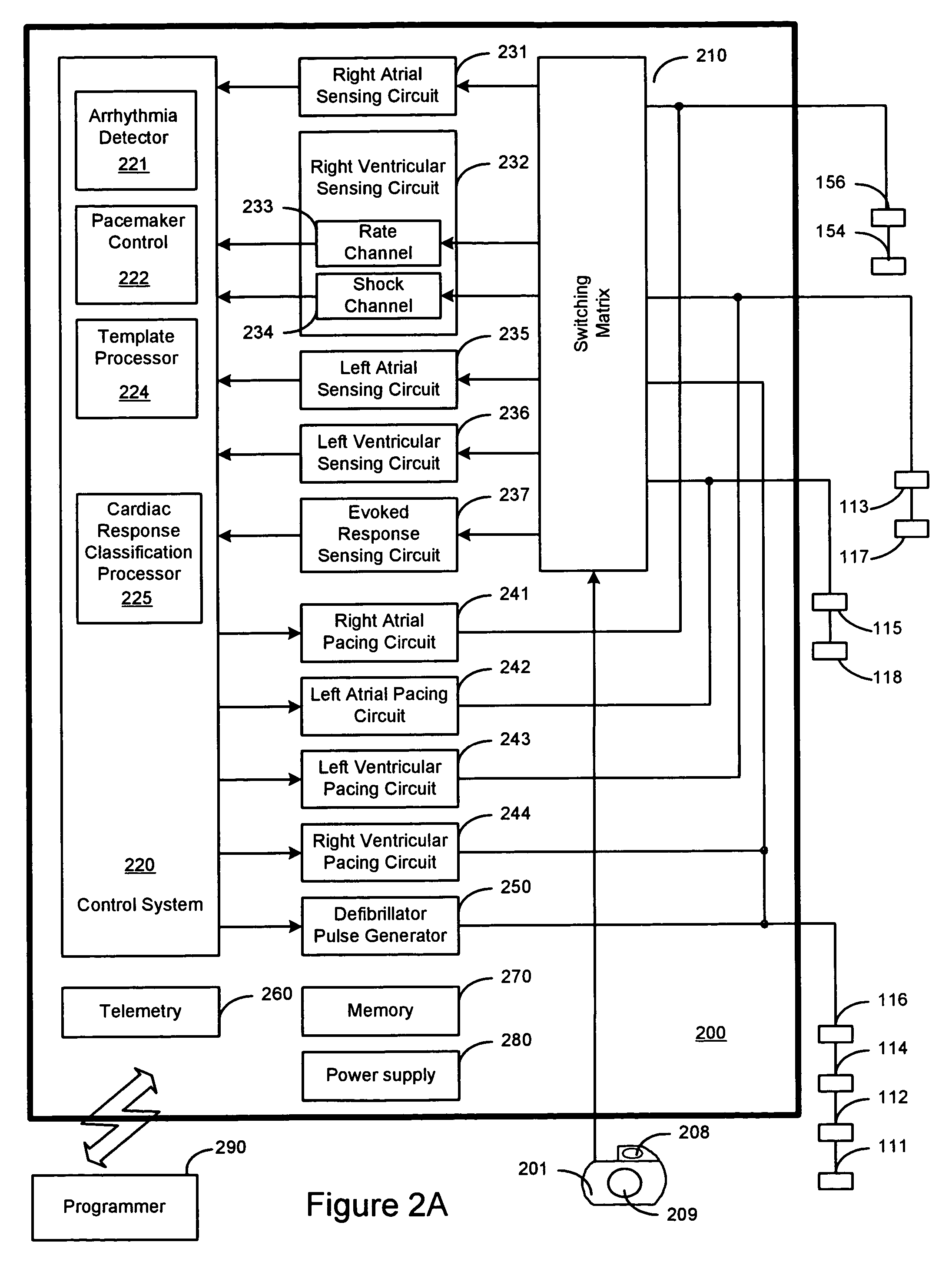Cardiac response classification using multisite sensing and pacing
a multi-site sensing and cardiac response technology, applied in the field of implantable medical devices, can solve the problems of ineffective pacing, discomfort, and reduced pumping efficiency
- Summary
- Abstract
- Description
- Claims
- Application Information
AI Technical Summary
Benefits of technology
Problems solved by technology
Method used
Image
Examples
Embodiment Construction
[0050]In the following description of the illustrated embodiments, references are made to the accompanying drawings forming a part hereof, and in which are shown by way of illustration, various embodiments by which the invention may be practiced. It is to be understood that other embodiments may be utilized, and structural and functional changes may be made without departing from the scope of the present invention.
[0051]Various embodiments of the invention involve using an electrode combination for pacing that is different from the electrode combination used for sensing the cardiac response to pacing. Employing different electrode combinations for pacing and sensing may be used to enhance cardiac response classification. In various embodiments, using different pacing and sensing electrode combinations facilitates discrimination between a captured response and a fusion / pseudofusion beat. Further, in accordance with embodiments of the invention detection of fusion / pseudofusion beats m...
PUM
 Login to View More
Login to View More Abstract
Description
Claims
Application Information
 Login to View More
Login to View More - R&D
- Intellectual Property
- Life Sciences
- Materials
- Tech Scout
- Unparalleled Data Quality
- Higher Quality Content
- 60% Fewer Hallucinations
Browse by: Latest US Patents, China's latest patents, Technical Efficacy Thesaurus, Application Domain, Technology Topic, Popular Technical Reports.
© 2025 PatSnap. All rights reserved.Legal|Privacy policy|Modern Slavery Act Transparency Statement|Sitemap|About US| Contact US: help@patsnap.com



